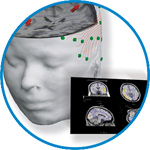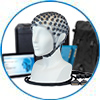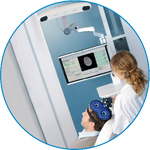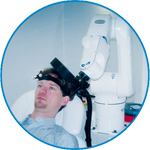- Home
- About ANT
-
Products

asa
asa is a highly flexible EEG/ERP and MEG analysis package with a variety of source reconstruction, signal analysis and MRI processing features.
.jpg)
eego mylab
The new frontier in multimodal brain research. With up to 16 kHz sampling rate, 256 EEG channels and unique software features, eego mylab gives you an unprecedented in-depth understanding of the human brain.

eego sports
eego sports offers complete freedom to collect high-density EEG data, bipolar EMG signals, and a variety of physiological sensor data, wherever and whenever required, with publish quality data in less than 15 minutes!

waveguard net
The waveguard net sets a new standard for research applications requiring high-density EEG data acquisition with quick preparation time, high flexibility, and subject comfort.

visor2
Our new and upgraded visor2 solutions integrate all the latest technologies for navigated rTMS, dual-coil navigation support, EEG-TMS recordings and pre-surgical evaluation for the highest quality in research and clinical procedures.

powerMAG ANT
The PowerMAG ANT 100 rTMS stimulator is designed for the specific needs of high-end TMS applications. Powerful high-frequency TMS as well as high precise single pulse and repetitive pulse protocols are combined in one single device.

xensor
xensor offers the solution for digitization of 3D electrode positions. xensor takes care of the whole procedure; it records, visualizes and stores positions acquired with a dedicated digitizer.

waveguard original
waveguard original is the cap solution for EEG measurements compatible with fMRI, MEG and TMS system. Use of active shielding guarantees performance in even the most demanding environments.

waveguard connect
waveguard connect EEG caps are a perfect match for hospitals and institutes aiming at reliable EEG, maximum uptime and great patient comfort! For optimal signal quality, the electrodes are made of pure, solid tin.

waveguard touch
waveguard touch is a dry electrode EEG cap. The unique Ag/AgCl coated soft polymer electrodes provide stable, research-grade EEG signals while maintaining subject comfort. The combination of these innovative dry electrodes and the industry-leading waveguard cap makes waveguard touch the best solution for dry EEG.

smartmove
smartmove allows planning of a complete TMS session ahead by defining stimulation sites based on anatomical MRI information and functional information like fMRI, PET or EEG/MEG.
Stay - References
- Support
- Events
- News
- Contact Us
You are here
Cortical pathways during postural control: New insights from functional EEG source connectivity
Cortical pathways during postural control: New insights from functional EEG source connectivity
Postural control is a complex feedback system that relies on vast array of sensory inputs in order to maintain a stable upright stance. The brain cortex plays a crucial role in the processing of this information and in the elaboration of a successful adaptive strategy to external stimulation preventing loss of balance and falls. In the present work, the participants postural control system was challenged by disrupting the upright stance via a mechanical skeletal muscle vibration applied to the calves. The EEG source connectivity method was used to investigate the cortical response to the external stimulation and highlight the brain network primarily involved in high-level coordination of the postural control system. The cortical network reconfiguration was assessed during two experimental conditions of eyes open and eyes closed and the network flexibility (i.e. its dynamic reconfiguration over time) was correlated with the sample entropy of the stabilogram sway. The results highlight two different cortical strategies in the alpha band: the predominance of frontal lobe connections during open eyes and the strengthening of temporal-parietal network connections in the absence of visual cues. Furthermore, a high correlation emerges between the flexibility in the regions surrounding the right temporo-parietal junction and the sample entropy of the CoP sway, suggesting their centrality in the postural control system. These results open the possibility to employ network-based flexibility metrics as markers of a healthy postural control system, with implications in the diagnosis and treatment of postural impairing diseases.

 Read more
Read more.jpg)




